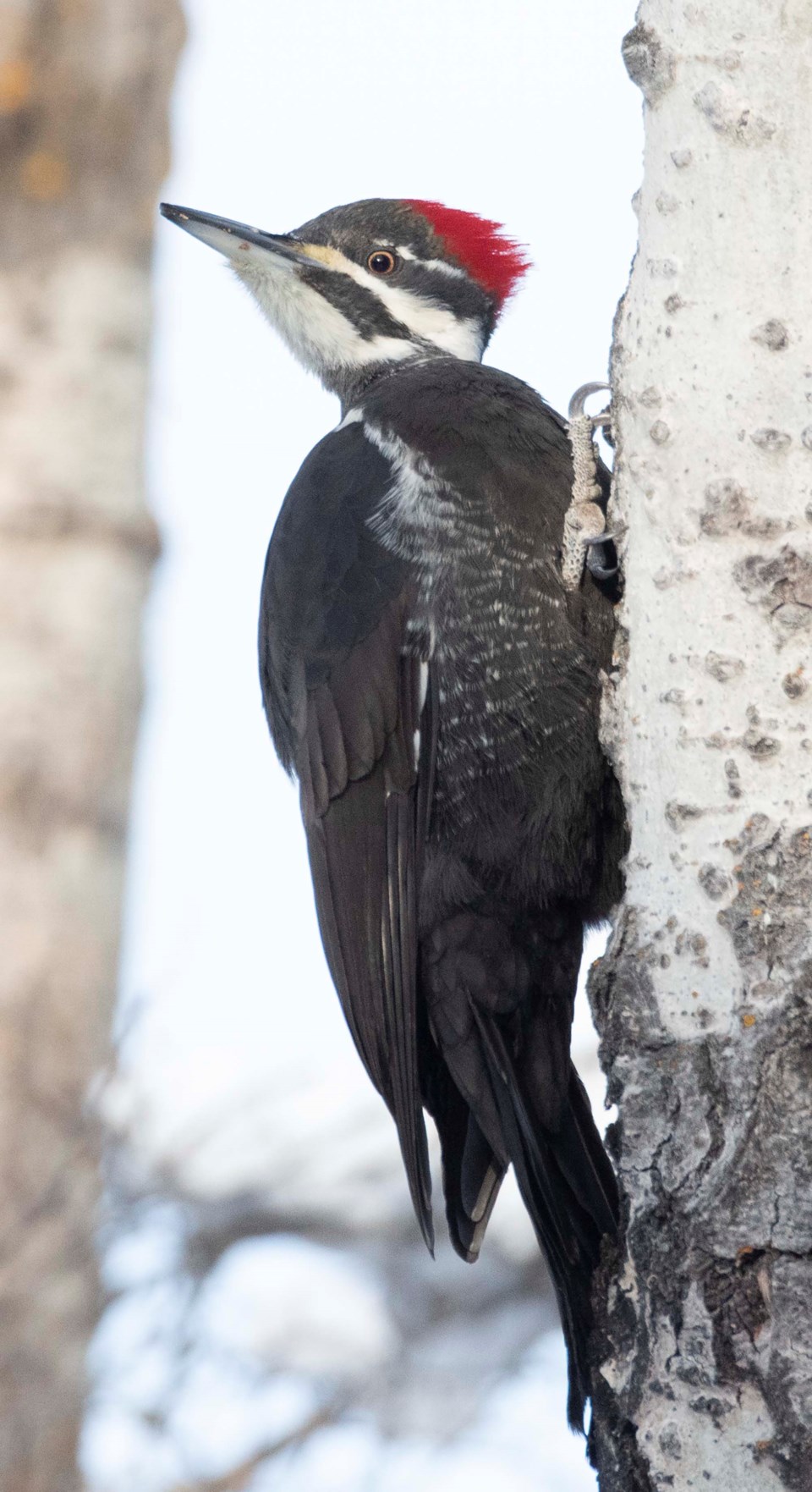A new study has upended a long-held theory on how woodpeckers can bash trees without getting brain damage.
Biologist Sam Van Wassenbergh of the University of Antwerp, and University of British Colombia masters student Erica Ortlieb, co-authored a study in Current Biology July 14 on how the skulls of woodpeckers do not, in fact, act as shock absorbers to protect their brains as they peck trees.
The beak of a woodpecker strikes a tree at about 20 km/h and imparts some 444 G (as in G-force, where 1 G = Earth-normal gravity) of deceleration to the bird’s brain, Wassenbergh said in an email interview — humans get concussions at just 135 G. Researchers have long believed that woodpeckers had some sort of built-in shock absorbers to protect their brains from these impacts, but also knew this theory had a pretty big flaw.
“The problem is that a hammer with a shock absorber built into it is just a bad hammer,” Wassenbergh said.
Woodpeckers want to transfer as much force as possible into their strikes to chip away wood, he explained. Shock absorbers would absorb this force and require the birds to peck harder, which would undo the effect of the shock absorption.
Hammer time
Wassenbergh and his team filmed captive black, pileated, and great spotted woodpeckers to test this shock-absorption theory.
Ortlieb said her contribution was data from research she did on pileated woodpeckers eight years ago.
“Pileated woodpeckers are really big,” she said, which made catching them for the study an adventure.
“They are very strong, and they do not hesitate to try and put holes in your hand.”
Ortlieb said she put her woodpeckers in a fish-tank-like enclosure and filmed them from many angles as they drilled into wood, which they did compulsively whenever she put a plank in front of them. By tracking specific points on the birds’ beaks and braincase, she found that the braincase decelerated at the same rate as the beak, meaning there was no shock absorption.
“On average for the pileated woodpecker we were seeing decelerations of about 600 G, which is very substantial,” Ortlieb said.
Wassenberg and his team used this and other data to create a computer model of a woodpecker’s head. The model showed how a shock-absorbing skull decreased the beak’s ability to drill into wood, while a stiff neck and skull allowed the beak to penetrate deeper for less energy. It also showed how the pressure imparted to a woodpecker’s brain during a peck is far below the level needed to cause brain damage.
This is a matter of surface area to volume, Ortlieb explained. Humans brains are big, giving them high volume relative to their surface area. That means any impact is spread over a smaller area, resulting in more pressure and brain damage. Woodpecker brains are small and have more surface area relative to their volume, so the force of their pecks is spread over more area, resulting in lower pressure and less harm. The team found that the woodpeckers would either have to hit twice as fast or strike wood that was four times as stiff to suffer a concussion.
The team concluded that woodpecker heads likely act as stiff hammers rather than shock-absorbing helmets to maximize pecking force. This could have implications for helmet design, as engineers have previously drawn inspiration from woodpecker skulls.
Wassenberg clarified that current designs with hard shells and shock-absorbing layers are likely ideal to protect human heads. Stiffer helms should be reserved for people looking to deliver strong headbutts.
Wassenberg said this research raises new questions about how woodpecker heads could be so stiff, given the many joints and bones involved. Their high-speed films also revealed that woodpeckers shuffled the upper and lower parts of their beak super-fast to free them whenever they got stuck in wood.
Wassenberg’s study can be found at doi.org/10.1016/j.cub.2022.05.052.



